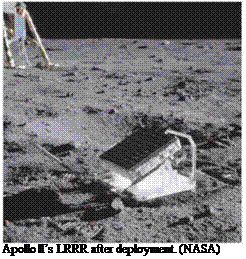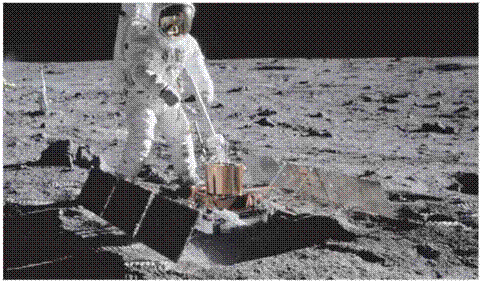EASEP
There was still enough momentum for science on Apollo 11 for NASA to begin a crash programme for tw’o simple experiments that the first crew’ could deploy in a few’ moments. This early Apollo scientific experiments package (EASEP) included a seismometer in a first attempt to investigate moonquakes. Solar panels powered the instrument throughout the lunar day and seismic signals were radioed to Earth in real time. It had small radioisotope heaters to provide warmth for the electronics during the intense cold of the long lunar night, but on the first attempt to reawaken it, engineers found it w’as malfunctioning and permanently switched off.
The second experiment still works today. It was the first of a series of laser retro

 |
reflectors that used the fact that an internal corner of a cube mirror will reflect light directly back to its source; in this case, pulses of laser light from Earth. Apollo crews would eventually deploy two more reflectors at widely separated sites. Two further reflectors would be added by the Soviets mounted on their Lunokhod remote – controlled unmanned vehicles. This laser ranging retro-reflector (LRRR) allowed the distance between Moon and Earth to be measured to tens of centimetres accuracy, later to within millimetres. This elegant technique has become a powerful tool for understanding the relative motions of the Moon and Earth, and in turn, a wide range of subtle geophysical phenomena that include the tides, the structure of the Moon and even the movement of Earth’s tectonic plates.
A third experiment, not part of NASA’s EASEP, was the solar wind collector. This was essentially a sheet of foil that was left to bask in the sunlight and the solar wind.
It was designed by the University of Bern in Switzerland and jokingly referred to as the Swiss Flag. Towards the end of the moonwalk, it
was rolled up and stored in a vacuum with the hope that it would contain embedded solar wind particles gathered from beyond Barth’s magnetosphere whose composition could be determined on Earth. Once returned to Earth, this experiment would provide direct information on the chemical composition of the Sun.










